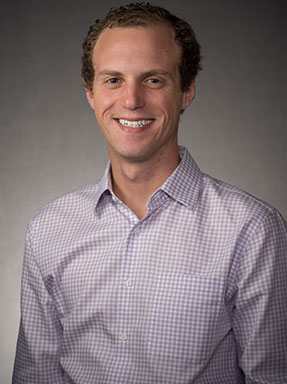‘Girls With Gadgets’ Brings STEM to Grade-School Students
More than 80 sign up for inaugural event

The morning of the University of Denver’s first Girls With Gadgets event, the sunrise, fittingly, splashed pink across a light blue sky.
Weldyn Allen knows because at 6:26 a.m. on this spring Saturday, she was wide awake, unable to quell her excitement. She couldn’t wait to streak those same colors across the building that houses the Daniel Felix Ritchie School of Engineering and Computer Science — streamers and balloons to welcome more than 80 grade-school girls to campus, each of them anxious for exposure to science, technology, engineering and mathematics (STEM).
Allen, a junior majoring in mechanical engineering with minors in math, physics and biology, was herself wearing a pink top, blue floral pants and an immovable smile. Even with her voice just about gone, she couldn’t contain her desire to speak.
“Oh my god, this is so cool,” she exclaimed, wandering around a quartet of rooms in the engineering building. At each station, girls ages 8 to 15 are building, programming and even soldering circuit boards, beaming.
“It’s so important to have women going into STEM careers and going into the workplace,” said Allen, who is also the public relations officer for DU’s chapter of the Society of Women Engineers, co-sponsor of the event. ”We need so much diversity in our opinions and our backgrounds. You need all those different voices at the table. And it starts here.”
This is the important stuff, Allen said. Grades matter, of course, but staging an event like this has allowed her to tap into and pass on her passion for her studies.
Over the course of the day, the girls ventured into a different sector of DU’s STEM programming. They built cars powered by mousetraps (mechanical engineering), wrote code for a video game (computer science), laser-engraved keychains with a 3-D printer (industrial engineering) and learned to use a soldering iron (electrical engineering). At each station, coed groups of student volunteers supervised and guided the girls through their work. High schoolers from the St. Mary’s Academy robotics team helped out, too. Industry professionals from the Denver metro area offered their expertise. Participants could see successful female engineers at every stage.
“When I was a kid, I didn’t have this,” said Katie Jo Adams, a project engineer at Lockheed Martin. “So I’m really passionate about getting involved now and getting girls excited about it at this point in their lives. It demonstrates to them science can be fun.”
According to the National Girls Collaborative Project, despite making up half of the U.S. college-educated workforce, women only represent 29% of STEM professionals. Middle school, Allen says, is the best time to disrupt that trend. Pique their interest now and girls are more likely to sign up for elective courses in the future.
Allen had long been wanting to host an event like this. Junior Tim Bouraoui, who mentors the SMAbotics robotics team at St. Mary’s Academy, had experience coordinating similar workshops. For help, they pulled in the National Society of Black Engineers and the American Society of Mechanical Engineers as co-sponsors. Support from the Ritchie School, University Advancement and local businesses made it happen.
“It’s just awesome because it’s all girls everywhere,” said Julia Stokowski, a homeschooled elementary student. “I think it represents how strong women can be. Women can be very important parts of society, and they can help with a lot of problems.”
At this event, solutions are nice but not necessary. It’s more about the process: building, troubleshooting, reconstructing, testing. Most of all, Allen says, it’s about tapping into newfound excitement.
“It’s contagious,” she said. “Seeing the girls excited makes the college students excited, makes the industry professionals excited. If you care about something and you’re passionate about something, then it’s going to spread like wildfire. Now these girls are going to go home and say, ‘Look how cool this is’ and get their friends involved.”
With the day winding down, the girls are shepherded into a classroom for closing remarks. They are about to hear Allen tell them to follow their passions. The girls, in turn, are about to express their gratitude for the opportunity to do things their schools can’t always afford to. Some of them are about to walk away with raffle prizes — with, say, soldering irons and miniature robots, donated or paid for with a budget surplus.
But first, a girl raised her hand to ask a question.
“Are you doing Girls With Gadgets next year?” she asked.
Allen’s omnipresent grin grew wider: “I hope so,” she replied.
“Good,” the girl said. “Because if you do, I’m definitely coming.”













